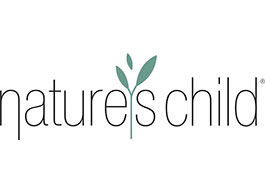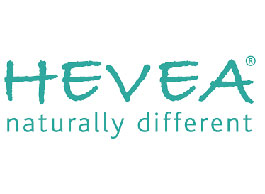As my friend and master storyteller Brian Hungerford often wryly asides, “There is a special place in hell for Walt Disney”. In the West, many of us have lost the ability to decode the metaphors in folktales, which leads us to confuse princes and princesses with toads. So many adults miss the potential in folktales to heal, soothe and model ways of being for children and themselves, in an entertaining and gripping way. Thus I want to write in defense and in praise of my good friends and lovers. One day Baba Yaga’s two trusted toads said, “You are truly terrifying!” “Good!” said Baba Yaga “because that’s what I’m here for.” (from The Wise Doll by Hiawyn Oram). Folktales are often rejected for their violence, their ‘sappy idealism’ and happy-ever-after endings. Those things didn’t worry me but the gender stereotypes did. So I avoided telling the classic Grimm’s tales and found more unusual folktales to tell with active heroines. But two experiences reversed that rejection.
The first was my son’s obvious delight in Little Red Cap (Red Riding Hood), Rapunzel, Goldilocks, Rumplestiltskin and Jack and the Bean Stalk. He was then two years old. The second was reading a book called The Uses of Enchantment by Bruno Bettelheim.
Firstly lets deal with violence in folktales. There are two things I’d like to consider. The first is age appropriateness and the second is sorting out positive stories from destructive stories. I tell a traditional Scottish folktale called Molly Whuppie. The heroine outwits and outruns a giant who wants to eat her and her sisters. My son’s friend, a very masculine boy who is four and a half, is afraid of the tale Molly Whuppie, while his younger sister and my son have loved it since they were two. So it’s not just age you need to consider, and certainly not gender, but individual temperament. My three year old ADORES scary stories and begs for them constantly. I ask “Are you sure this isn’t too scary for you?” He shakes his head emphatically “No” and begs for a story about a witch who eats children. In fact for my son, his nightmares eased, then ceased, when we began telling stories like Red Cap (the older version of Little Red Riding Hood), Jack and The Beanstalk and Baba Yaga. I recognise that the opposite could be true for some children if given the wrong story too young. They are good medicine, but you have to get the dosage right.
Children instinctively respond emotionally and unconsciously to the metaphors embedded in stories if they are allowed to. Unconsciously and emotionally they recognise the witch, the giant and the wolf as the scary aspect of adults and/or themselves. When I am frazzled and exhausted and the baby is crying and my 3 year old playfully hits me one too many times after being asked not to, I can turn into something akin to a wolf, a witch and/or a giant. This is utterly bewildering to a child. Where did that nice Mummy go who is playful, loving and on my side? It can be easier to imagine that Mummy or Daddy or grandma or teacher or whoever, has been temporarily taken over by an evil monster, than to contemplate that they are capable of being so frightening. Hence, grandma is engulfed by the wolf in Little Red Riding Hood. (Bettelheim, p 179).
Giants usually symbolise that side of our nature that is grumpy, selfish, insensitive, foolish and mean. But to children, the looming height and ultimate power over them that adults possess, means unconsciously adults are their giants. This is amplified when we are grumpy but even when we are reasonable we can still seem frustratingly powerful. No matter if you are the most fair and calm parent in the world, your child will still enjoy fantasising that s/he can be the boss and even defeat you. In reality they need your protection, guidance and boundaries to feel safe, and of course they don’t really want to see you come to harm. You are their beloved and the centre of their world. But in a story they can unconsciously have those darker desires fulfilled without any real harm coming to you. Furthermore “…whatever the content of a fairy tale – which may run parallel to a child’s private fantasies whether they be oedipal, vengefully sadistic, or belittling of a parent – it can be openly talked about because the child does not need to keep secret his feelings about what goes on in the fairy tale, or feel guilty about enjoying such thoughts.” Bettelheim, p57.
Folktales can give children access to ways of dealing with their natural fears, furies and frustrations. Even those with violent images, can give children important ways to deal with these confusing feelings. Some tales might model a kind of behaviour that is inappropriate. In the story Molly Whuppie, I changed a significant part of the story, because the giant’s wife – who had actually been helpful to Molly – got beaten and this was set up as funny. This probably came from a time in history when wife-beating was seen as acceptable and the norm. But the trick is in differentiating a tale that is in itself sick, from a healthy one with a sick bit. We don’t need to throw the baby out with the bath water. A little bit of surgery made the tale acceptable to me.
Recently, I had a very vivid personal experience of the healing and empowering qualities of folk tales. I was due to go on tour to Sydney for two weeks work storytelling, but I was feeling really scared. My work when I’m on tour, is fairly intense. It involves delivering twelve to fifteen solo shows a week to audiences of 120 to 250 schoolchildren of mixed ages as well as driving and navigating through peak hour city traffic to one or two different locations a day. Now I have ten years experience and all that I can happily cope with normally. But this time, I was taking my 3 year old son and my breast-fed baby, who was then 4 months. She was crying intensely in short car trips and waking 5 times a night. I felt I was facing an impossible task but I was also determined to do it, so I had to find the courage. At the same time I was learning The Wise Doll, a version of a tale about the witch of Slavic and Russian tradition Baba Yaga, by Haiwyn Oram. Now Baba Yaga’s house is surrounded by a fence made of bones: small bones, because she likes to eat children for dinner. It’s a pretty graphic and violent image. Her house stands on chicken legs and when she wants to travel she simply commands: “Rise chicken legs, rise and RUN!” and the chicken legs rise up, and the house rises up, and the chicken legs carry the whole house forward with the fence of bones surrounding it.
The “Too Nice Girl” is sent to Baba Yaga’s house in the middle of the forest, in the middle of the night, to visit Baba Yaga and bring back a gift. With the help of her Wise Doll, given to her by her mother before she died, the terrified girl passes three tests, gains the gift and her courage as well. Indeed the gift represents her courage. The more I rehearsed it, the more I felt courage rising up in me – for if a young terrified girl could go to the house of a child-eating witch, alone in the middle of the night, what was two weeks performing in Sydney with two small children? This is one of the reasons why the scary characters in folk stories need to be so vivid. If, by identifying with a hero or heroine in a folktale, you can vicariously experience facing and triumphing over an overwhelmingly scary foe, then facing your own real life challenges seems a lot easier and do-able. It is a psychologically empowering experience. This has a particular poignancy for children whose fears can loom large.
But there are other reasons. “The fairy tale hero has a body which can perform miraculous deeds. By identifying with him, any child can compensate in fantasy and through identification for all the inadequacies, real or imagined, of his own body. He can fantasise that he too, like the hero, can climb into the sky, defeat giants, change his appearance, become the most powerful or the most beautiful person – in short have his body be and do all the child could possibly wish for. After his most grandiose fantasies have been satisfied he can be more at peace with his body as it is in reality” (Bettelheim, p57). What about that sappy idealism and those happy-ever-after-endings? Well I believe what the world needs now is not only love, but hope. Folktales give hope by the bucket load.
Once a child has been exposed to enough folktales, they begin to understand the form. Folktales usually end happily and hopefully. Far from misleading children, the optimism or happy-ever-after endings of folktales, are a loving salve for their fragile hearts in their struggles toward maturity. Folktales are tailor-made for the young child.
“In childhood, more than in any other age, all is becoming. As long as we have not achieved considerable security within ourselves, we cannot engage in difficult psychological struggles unless a positive outcome seems certain to us, whatever the chances for this may be in reality. The fairy tale offers fantasy materials which suggest to the child in symbolic form what the battle to achieve self-realisation is all about, and it guarantees a happy ending.” (Bettelheim, p39)
As you re-enter the world of folktales with an eye to the metaphor, you may start having those little “ah-hah” experiences of recognition and tapping into the natural ability you probably possessed as a child to decode those symbols – but as an adult you can do it more consciously. You may notice that the cow that Jack has to sell in Jack and the Beanstalk is called Milky White. You may remember that tragic moment when you had to give up that delightful flow of milk and approval from mother to venture forth into the world, take risks and find your own initiative. Men, as they read of those those beans sprouting in the night, may remember the days when their budding sexuality caused extravagant dreams akin to the powerful phallic beanstalk.
In Sleeping Beauty you may remember that phase in your adolescence, or recognise it in your teenager, when there can be a need to withdraw from the world as if asleep, in order to deal with the huge transformations going on within. Alternatively, you may simply enjoy the tales without a care for metaphor at all but regardless, they will do their work on you. And perhaps you’ll kiss a few toads, as you roam through the world of traditional story, but be prepared, for once children find those princes and princesses, they want will to kiss them again and again and again- and so may you!
References Bettelheim, Bruno, The Uses of Enchantment (Vintage, New York, 1975). Oram, Hiawyn, The Wise Doll (Anderson, London, 1997). The Complete Grimm’s Fairy Tales (Pantheon Books, New York, 1944). Commentary by Joseph Campbell.
You can learn more about Jenni at http://www.storytree.com.au/












